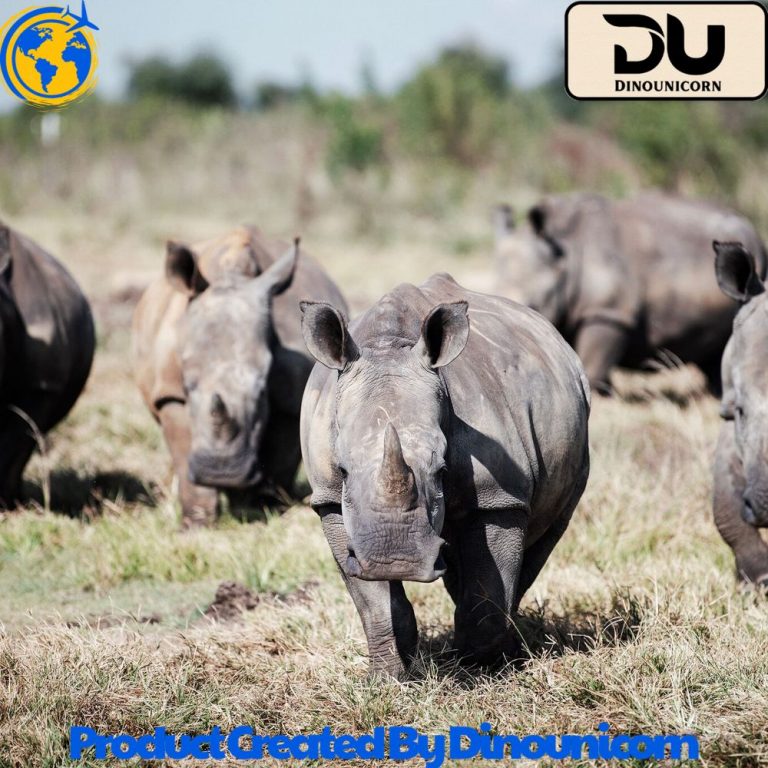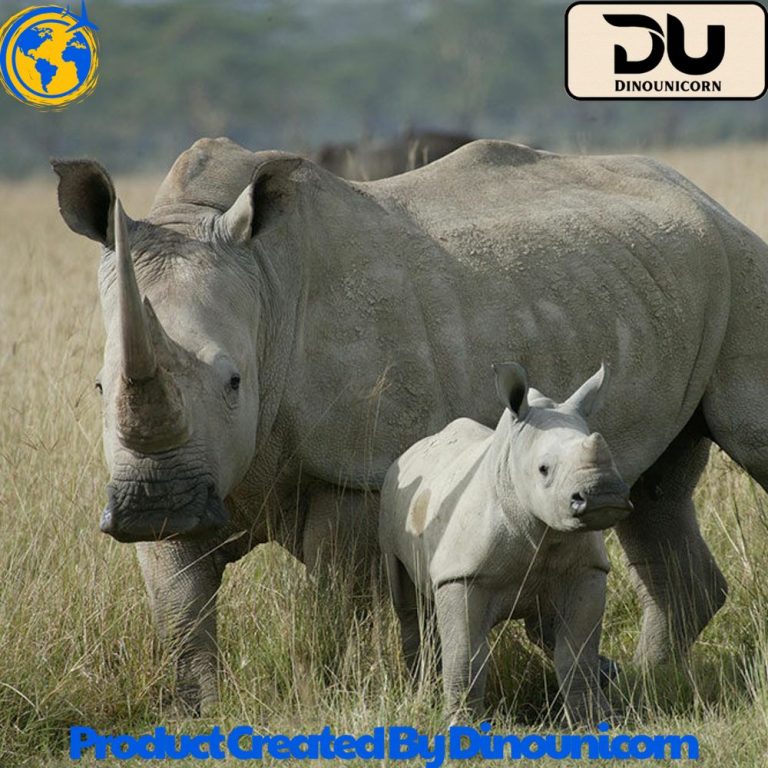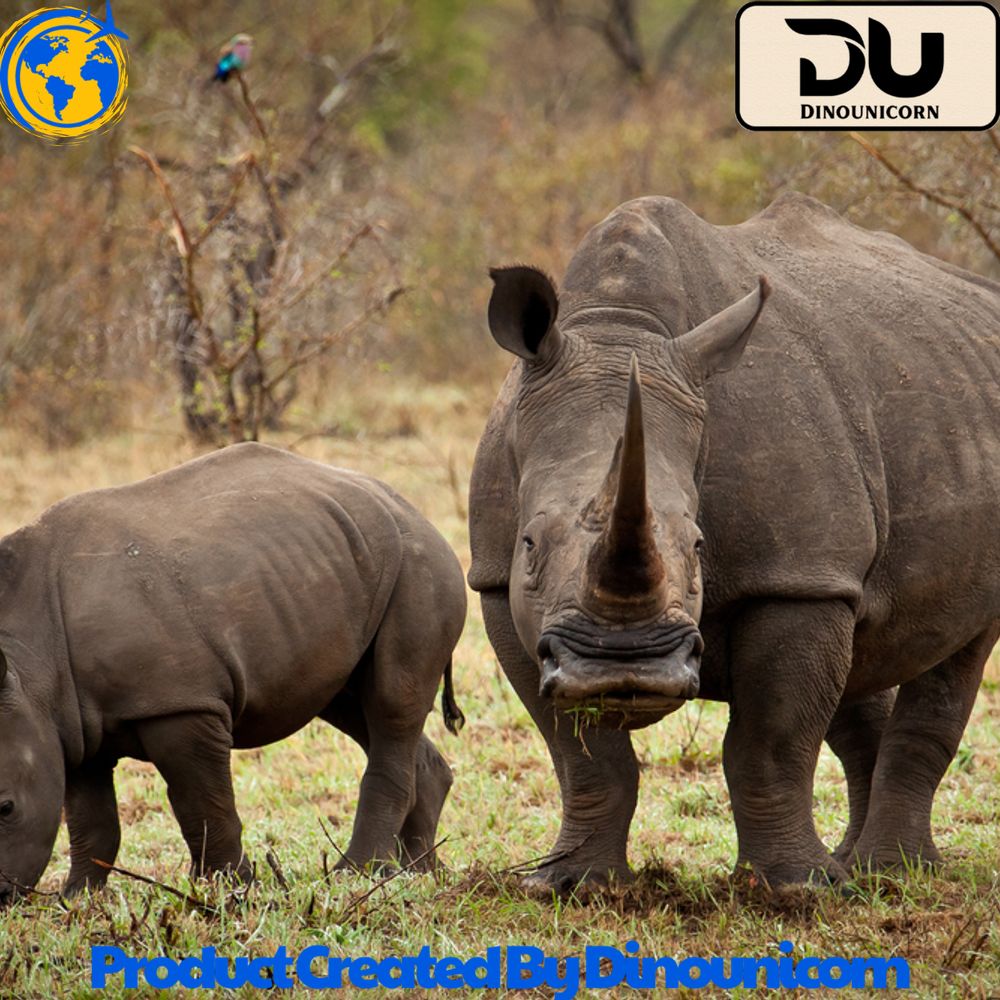Blog
What Do Rhinos Eat?
What Do Rhinos Eat? A Complete Guide to Rhino Diet
Rhinos are fascinating creatures that play an important role in their ecosystems. Understanding their diet is crucial not only for wildlife enthusiasts but also for those involved in conservation efforts. This guide will take you through the feeding habits of rhinos, explaining what they eat in the wild, in captivity, and how their diet varies by species.
Understanding Rhino Feeding Habits
Rhinos are herbivores, meaning they primarily consume plant-based foods. Their feeding habits depend on the species and the environment in which they live. In the wild, rhinos graze or browse, and their diet can vary from grasses to shrubs and even trees.
- Grazing vs. Browsing
Grazing refers to feeding on low-growing vegetation such as grasses, while browsing involves eating shrubs, leaves, and trees. White rhinos are primarily grazers, whereas black rhinos tend to browse more often, especially in areas with dense vegetation. - What Do Rhinos Eat in the Wild?
In the wild, rhinos feed on a wide variety of plants, and their diet depends largely on their species and habitat. Most rhinos prefer grasses, but they may also eat fruits, leaves, and even tree bark in certain environments. This diverse diet helps maintain the balance of the ecosystems they inhabit.
Types of Rhinos and Their Diets
Different species of rhinos have distinct dietary needs and feeding preferences, depending on the regions they live in and the type of vegetation available.
What Do White Rhinos Eat?
White rhinos, native to sub-Saharan Africa, are primarily grazers. They consume large amounts of grass, particularly species like speargrass and blady grass. They may also eat fruits and shrubs occasionally, but grass remains the staple of their diet.
- Feeding Behavior in the Wild vs. Captivity
In the wild, white rhinos graze for several hours a day, often in the early morning and late afternoon. In captivity, their diet may be supplemented with hay, vegetables, and fruits to ensure they get enough nutrients.
What Do Black Rhinos Eat?
Black rhinos, another species found in Africa, are more browsers than grazers. Their diet consists mainly of shrubs, bushes, and fruits. They are known to feed on thorny plants, which is why they have tough lips that allow them to grasp and manipulate plants with ease.
- Diet Variations Across Different Habitats
In forested or bushy areas, black rhinos consume more fruits and woody plants, while in open savannas, they may graze on short grasses when available.

What Do Rhinos Eat in the Wild?
In their natural habitats, rhinos rely on the diverse plant life around them. Their diet can vary based on the seasonal availability of food and the region they live in.
- Common Food Sources in African Habitats
In Africa, rhinos feed on grasses, herbs, shrubs, and trees. Their diet includes high-fiber plants that help maintain their digestive health. White rhinos consume mainly grasses, while black rhinos prefer shrubs and fruiting plants. - Rhino Diet in Different Environments
Rhinos in grasslands eat mostly grass, while those in forests or woodlands may focus more on fruits, leaves, and twigs. In areas with limited grass, they may rely more heavily on browsing. - Seasonal Changes in Rhino Feeding Habits
During the dry season, when grasses are sparse, rhinos may turn to trees and shrubs for food. Conversely, during the wet season, when grasses are abundant, they may return to grazing.
What Do Rhinos Eat in Captivity?
Captivity presents unique challenges in feeding rhinos. In zoos and sanctuaries, rhinos may not have access to the same variety of food they would find in the wild. Therefore, caretakers often provide a carefully balanced diet to meet their nutritional needs.
- Diet Variations in Zoos and Sanctuaries
In zoos, rhinos are often given hay, vegetables, and fruits such as apples, carrots, and bananas. These foods are chosen to mimic the natural diet as much as possible, though they may not replicate the diversity found in the wild. - Nutritional Needs of Rhinos in Managed Care
Since rhinos in captivity do not have the ability to forage, their caretakers must ensure they receive adequate amounts of fiber and essential nutrients. This may include minerals and supplements to maintain optimal health.

What Do Baby Rhinos Eat?
Baby rhinos, or calves, begin their lives dependent on their mother’s milk. However, as they grow, they gradually start to explore solid food.
- Milk vs. Solid Food in Early Stages
Like most mammals, rhino calves are nursed by their mothers for the first few months of life. They begin grazing on grasses at around three to four months old but continue to nurse for several years. - Introduction to Plant-Based Foods
Once baby rhinos begin to graze, they start by nibbling on soft, young grasses. Over time, they develop a taste for a variety of plants, depending on the species of rhino and their surroundings. - Special Dietary Needs of Rhino Calves
Rhino calves have specific nutritional requirements to support their rapid growth. In the wild, they learn to forage under the watchful eye of their mothers, and in captivity, caretakers ensure they are provided with proper nutrition.
Rhino Diet by Species
Each rhino species has its own set of dietary preferences. These preferences depend on their geographical location, available food sources, and physical adaptations.
- Comparing the Diets of Different Rhino Species
While white rhinos are primarily grazers, black rhinos are more likely to browse. Indian rhinos, found in the Indian subcontinent, have a diet that includes grasses, shrubs, and water plants. Each species has evolved to consume food that is available in their environment, helping them thrive in their respective ecosystems. - How Habitat Influences Dietary Preferences and Feeding Behavior
The type of habitat plays a major role in shaping the feeding habits of rhinos. Rhinos in savannas primarily eat grass, while those in forests or riverine habitats tend to browse more frequently.

What Plants and Fruits Do Rhinos Eat?
Rhinos have a diverse diet that includes a variety of plant species. While the majority of their diet consists of grass, they also consume shrubs, fruits, and trees.
- Key Plants and Fruits Rhinos Prefer
Rhinos favor plants that are rich in fiber and nutrients. White rhinos, for example, prefer grasses, while black rhinos may eat fruits like mangoes, berries, and figs. In addition to these, they may also feed on the leaves of acacia and eucalyptus trees. - Importance of Grasses, Shrubs, and Trees in Rhino Diet
Grasses provide the bulk of the rhino diet, but shrubs and trees play an important supplementary role, especially for black rhinos. These plants offer a variety of nutrients that contribute to the rhino’s overall health. - Nutritional Benefits of Specific Plants for Rhinos
Certain plants, such as high-protein grasses and nutritious shrubs, help maintain the digestive health of rhinos. Additionally, fruits and leaves can provide important vitamins and minerals that support overall well-being.
How Do Rhinos Get Their Nutrition?
Rhinos are primarily herbivores, so their diet is rich in plant-based foods. They rely on high-fiber grasses and shrubs to meet their nutritional needs.
- Understanding Rhino Nutritional Needs
Rhinos require a high intake of fiber to maintain their digestive system. They also need vitamins and minerals to stay healthy. For example, the calcium in leaves and branches helps maintain strong bones, while the fiber in grass aids digestion. - The Role of Fiber and Plant-Based Nutrients
Fiber is essential for rhinos because it supports proper digestion and prevents health issues such as colic and bloat. Additionally, plant-based nutrients provide the energy rhinos need to sustain their active lifestyles. - Rhino Food Sources and How They Maintain a Balanced Diet
In the wild, rhinos forage throughout the day, consuming a variety of plant species. In captivity, their diet is carefully managed to ensure they get a balanced mix of essential nutrients.
Conclusion: The Importance of Understanding Rhino Diet
Understanding what rhinos eat is not only essential for those interested in these magnificent creatures, but it also plays a crucial role in conservation efforts. By protecting rhino habitats and ensuring they have access to the right food, we can help maintain healthy populations and preserve these endangered species.
- Why Knowing What Rhinos Eat Is Important for Conservation
The more we understand about rhino diets, the better equipped we are to create conservation strategies that support their needs. Ensuring that rhinos have access to their natural food sources is key to protecting their populations. - Impact of Diet on Rhino Health and Behavior
A balanced diet is essential for rhinos’ physical health and their ability to reproduce. Inadequate nutrition can lead to weakened immune systems, affecting their survival rates. - The Future of Rhino Diet Research and Conservation Efforts
As research into rhino diets continues, conservationists will be better equipped to manage rhino populations and protect them from threats such as habitat loss and poaching.

Frequently Asked Questions (FAQs)
- What do rhinos eat in the wild?
Rhinos primarily eat grass, but their diet can also include fruits, shrubs, and tree bark depending on their species and environment. - How do rhinos get their nutrition?
Rhinos get their nutrition from a diet rich in fiber from grasses and nutrients from shrubs, fruits, and leaves. - What do baby rhinos eat?
Baby rhinos start by nursing from their mothers and gradually begin eating grass and other plants at around three to four months old. - Do rhinos eat fruits?
Yes, black rhinos in particular enjoy eating fruits like mangoes, berries, and figs. - Why do rhinos prefer certain types of plants?
Rhinos prefer plants that are rich in fiber and nutrients, which are crucial for their digestive health and overall well-being.
By following these guidelines and incorporating essential keywords, this article aims to serve the needs of readers interested in understanding the diet and feeding habits of rhinos.
 Skip to content
Skip to content

